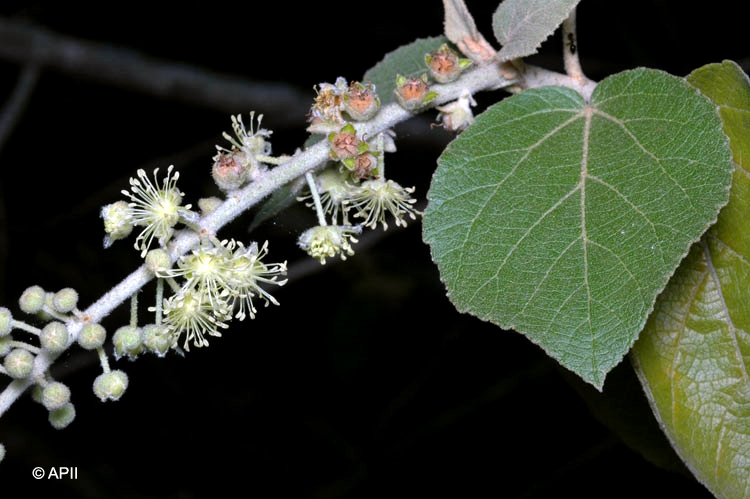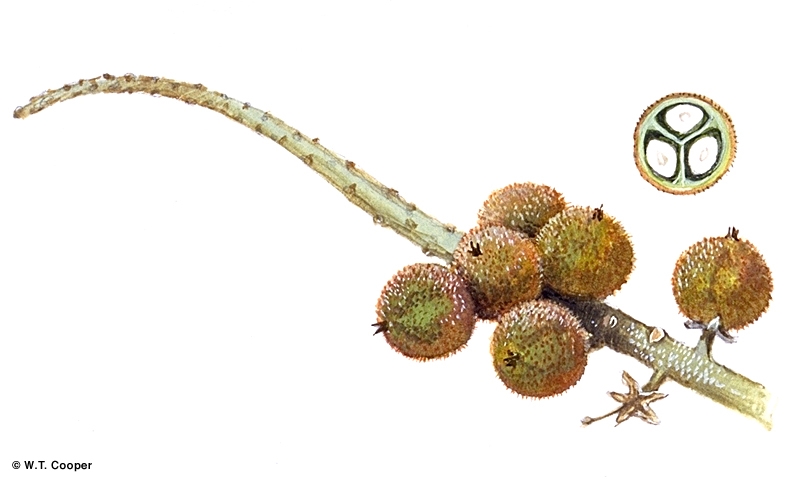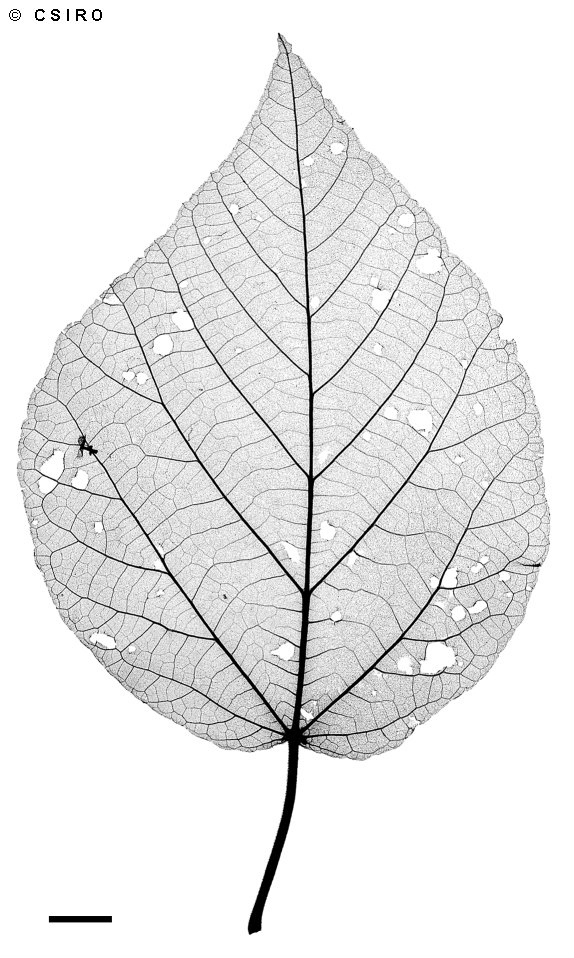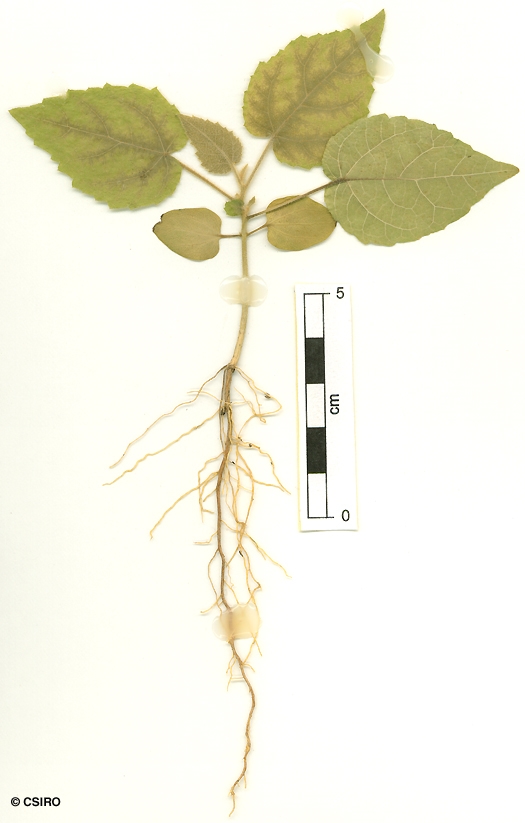Australian Tropical Rainforest Plants - Online edition
Croton arnhemicus Mull.Arg.






Mueller Argoviensis, J. (1865) Linnaea 34: 112. Type: In Arnhemsland Novae Hollandia septentrionalis (Dr. F. Mueller! in hb. DC.). Lecto: Qld, Cape York, MacGillivray 514; K. (Fide Forster (2003).
Hard Cascarilla
Seldom exceeding 30 cm dbh. Blaze odour rather spicy. White or cream granular stripes in the outer blaze.
Stipules narrow, about 2 mm long. Leaf blade +/- cordate, about 6-15 x 3-11 cm. Stellate hairs visible with a lens on leafy twigs, petioles and both the upper and lower surfaces of the leaf blade. Two stalked glands visible on the underside, at the base of the leaf blade, one on either side of the midrib. Oil dots visible with a lens. Old leaves turn orange prior to falling.
Inflorescence and floral parts densely clothed in stellate hairs. Flowers about 4 mm diam. Male flowers: Flowers with about 20-30 stamens. Female flowers: Ovary densely stellate hairy.
Cotyledons +/- cordate, about 15-21 x 12-15 mm, hairy, hypocotyl hairy. First pair of leaves, margin toothed and white. At the tenth leaf stage: leaf blade +/- cordate, margin +/- crenate, the underside densely clothed in stellate hairs; two stalked glands visible on the underside at the base of the leaf blade, one on either side of the midrib. Seed germination time 30 days.
Occurs in WA, NT, CYP, NEQ and CEQ. Altitudinal range from near sea level to 600 m. Grows in monsoon forest, drier rain forest and along creeks and rivers through open forest country. Possibly occurs in New Guinea.





